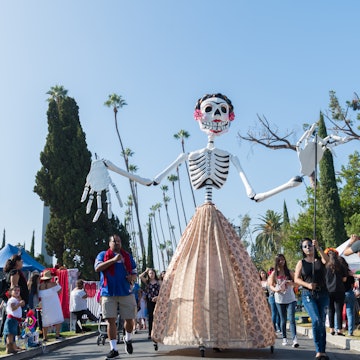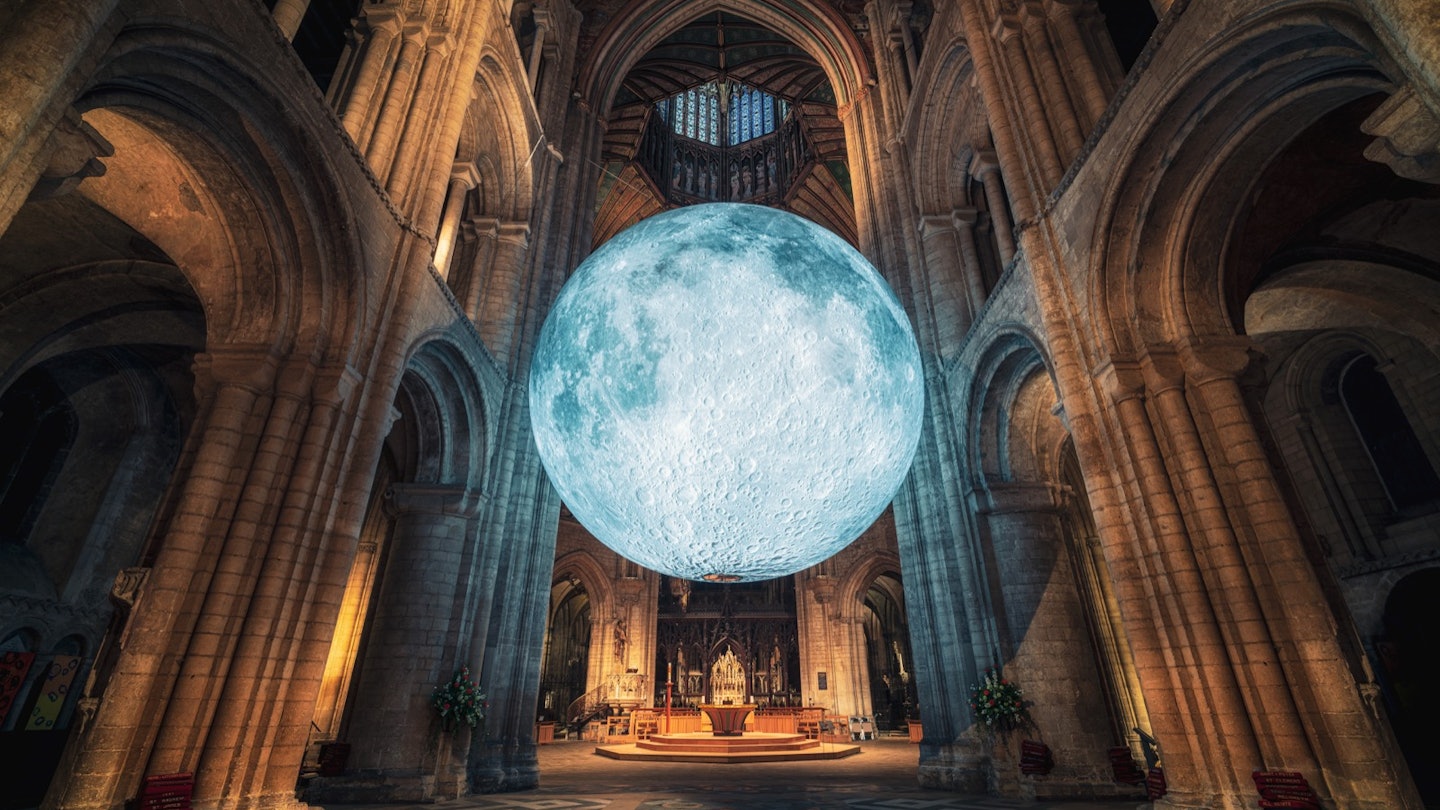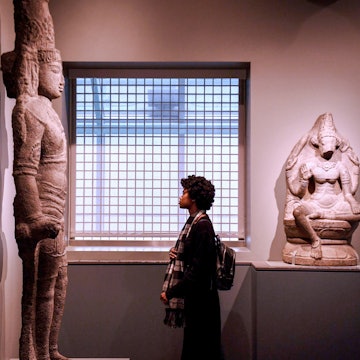

The Museum of the Moon is a 23-foot inflatable replica of the Moon © James Billings
The moon has captivated humankind forever, inspiring mythology, songs, art, and scientific observation. This year marks the 50th anniversary of the Apollo 11 missions that took humankind to the moon, and NASA recently announced plans to send astronauts back. All eyes are on the sky, pondering our nearest celestial neighbor. If you want to get to know the moon more intimately than from 238,900 miles away, here are some ways you can celebrate the Apollo 11 anniversary and have lunar experiences here on earth.

Museum of the Moon
Get up close and personal with the moon at Museum of the Moon. Created by UK artist Luke Jerram, this touring exhibit allows you to see the moon in greater detail than ever before. Using NASA imagery, Jerram created a 1:500,000 spherical, self-illuminating scale model of the moon which allows visitors to walk fully around the moon and see every fascinating detail.
As a touring exhibit with several moons on display, the Museum of the Moon has upcoming tour dates at The Houston Museum of Natural Science, the Natural History Museum in London, and The Franklin Institute in Philadelphia among many others.

Craters of the Moon National Monument & Preserve
If you want to imagine what a trip to the moon might actually be like, Craters of the Moon National Monument & Preserve in Idaho is the place to visit.
Craters of the Moon first gained national attention in a 1924 issue of National Geographic, when an early visitor said its geologic features appeared similar to the barren, craggy surface of the moon. It was protected as a national monument that same year, and travelers still come to see the weird basalt and lava formations that cover the region.
In 1969, NASA even used the site as training grounds for moon-bound astronauts so they might be better prepared for their missions. It wasn’t until 2017 that Craters of the Moon was also recognized for its pristine dark skies, earning the International Dark-Sky Association Dark Sky Park certification.
Read more: Which US Dark Sky Park is right for you?

Space Camp
If you dream of someday visiting the moon in person, you’ll need to train up. Space Camp, located in Huntsville, Alabama, is the best spot for us non-astronauts to train and gain an idea of what going to space might be like. Space Camp is open to prospective astronauts from age 9-18 as well as families, adults, and even corporate groups for special camps throughout the year. Space Camp activities focus on mission simulations and giving you the experience of astronaut training – both physically and mentally.
One such experience is the 1/6th Gravity Chair, which simulates moon gravity. You’ll strap into a chair attached to a system of pulleys and springs that allow you to bounce, leap, twirl, and step on a lunar-like surface to get a sense of what astronauts on the moon experienced after making their first steps.
Don’t miss the rest of the US Space & Rocket Center during your visit. You can see other simulated lunar landscapes and explore the Saturn V Hall of the Davidson Center for Space Exploration where you can walk under a Saturn V rocket from end to end, see a lunar lander, a moon rock, and even the Apollo 16 command module, which carried astronauts to the moon in 1972.
Read more: How to experience a rocket launch on Florida's Space Coast

Adler Planetarium
If you live in an urban area with light pollution that makes even seeing the moon tricky, planetariums offer the chance to see the night sky and celestial objects up close and personal. Most planetariums have a show that focuses on the current night sky to help you learn about the locations of the stars and moon; some have special shows that focus on the moon specifically.
One such planetarium is Chicago’s Adler Planetarium. Situated out on Northerly Island at the edge of Lake Michigan, the Adler offers visitors so much more than just shows in their planetarium dome room. Exhibits throughout the Adler teach about our sun, our solar system and beyond. In the planetarium, you can watch shows on a number of subjects, including one show called Imagine the Moon that explores the role of the moon in our lives.
Outside the Chicago area, check with your local planetarium to see which shows they offer.
Read more: Otherworldly adventures for aspiring astronauts

McDonald Observatory
Under the wide-open skies above West Texas, the University of Texas at Austin operates the McDonald Observatory with its telescopes and instruments, watching the night sky and welcoming visitors by day and night. While most telescopes are measured in centimeters, McDonald Observatory has three permanent telescopes greater than two meters in diameter: the 10-meter Hobby-Eberly Telescope, the 2.7-meter Harlan J. Smith Telescope, and the 2.1-meter Otto Struve Telescope. Together, these three make the observatory one of the most powerful in the region.
What makes McDonald Observatory special for lunar lovers is their special Lunar Viewing Program. During these special events, moon-gazers will learn about the formation of the moon, then observe important formations and locations on the moon’s surface – including Apollo landing sites.
It’s a three-hour drive from El Paso, the nearest major city and airport, to McDonald Observatory. The Observatory also offers overnight accommodation in an on-site ‘Astronomers Lodge,’ available on a first-come, first-served basis.
















